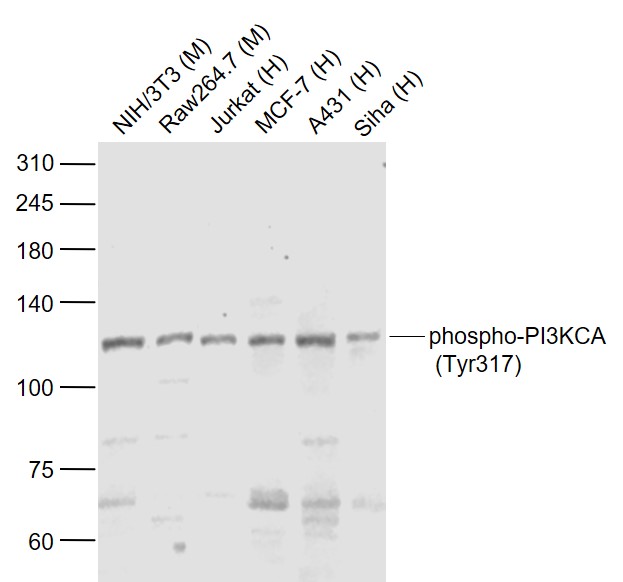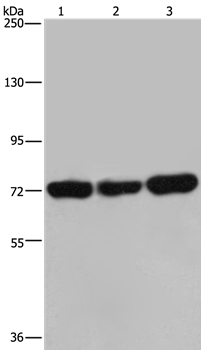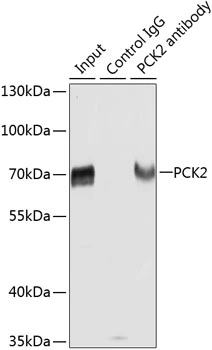PCK2 antibody
GTX114919
ApplicationsImmunoFluorescence, Western Blot, ImmunoCytoChemistry, ImmunoHistoChemistry, ImmunoHistoChemistry Paraffin
Product group Antibodies
TargetPCK2
Overview
- SupplierGeneTex
- Product NamePCK2 antibody
- Delivery Days Customer9
- Application Supplier NoteWB: 1:500-1:3000. ICC/IF: 1:100-1:1000. IHC-P: 1:100-1:1000. *Optimal dilutions/concentrations should be determined by the researcher.Not tested in other applications.
- ApplicationsImmunoFluorescence, Western Blot, ImmunoCytoChemistry, ImmunoHistoChemistry, ImmunoHistoChemistry Paraffin
- CertificationResearch Use Only
- ClonalityPolyclonal
- Concentration1 mg/ml
- ConjugateUnconjugated
- Gene ID5106
- Target namePCK2
- Target descriptionphosphoenolpyruvate carboxykinase 2, mitochondrial
- Target synonymsPEPCK, PEPCK-M, PEPCK2, mtPCK2, phosphoenolpyruvate carboxykinase [GTP], mitochondrial, PEP carboxykinase, epididymis secretory sperm binding protein, phosphopyruvate carboxylase
- HostRabbit
- IsotypeIgG
- Protein IDQ16822
- Protein NamePhosphoenolpyruvate carboxykinase [GTP], mitochondrial
- Scientific DescriptionThis gene encodes a member of the phosphoenolpyruvate carboxykinase (GTP) family. The protein is a mitochondrial enzyme that catalyzes the conversion of oxaloacetate to phosphoenolpyruvate in the presence of GTP. A cytosolic form encoded by a different gene has also been characterized and is the key enzyme of gluconeogenesis in the liver. The encoded protein may serve a similar function, although it is constitutively expressed and not modulated by hormones such as glucagon and insulin that regulate the cytosolic form. Alternatively spliced transcript variants have been described. [provided by RefSeq]
- Storage Instruction-20°C or -80°C,2°C to 8°C
- UNSPSC12352203
References
- Hsu HP, Chu PY, Chang TM, et al. Mitochondrial phosphoenolpyruvate carboxykinase promotes tumor growth in estrogen receptor-positive breast cancer via regulation of the mTOR pathway. Cancer Med. 2023,12(2):1588-1601. doi: 10.1002/cam4.4969Read this paper
- Chu PY, Jiang SS, Shan YS, et al. Mitochondrial phosphoenolpyruvate carboxykinase (PEPCK-M) regulates the cell metabolism of pancreatic neuroendocrine tumors (pNET) and de-sensitizes pNET to mTOR inhibitors. Oncotarget. 2017,8(61):103613-103625. doi: 10.18632/oncotarget.21665Read this paper







